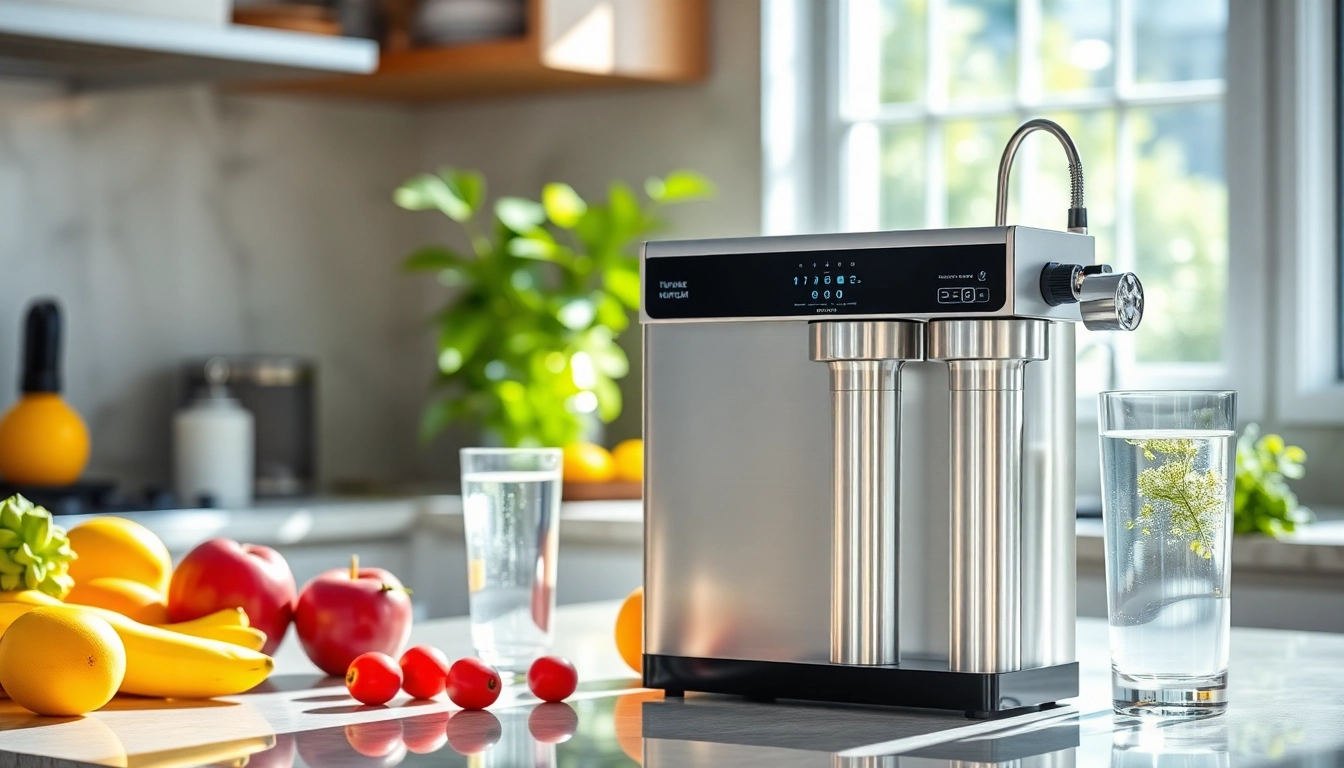Introduction to Reverse Osmosis Water
Water is essential for life, and ensuring access to clean drinking water is crucial for maintaining health and well-being. One effective method of purifying water is through reverse osmosis. Reverse osmosis water is increasingly popular for its ability to remove contaminants, providing a safe and healthy option for hydration. This article will delve into the details of reverse osmosis water, exploring its benefits, how it works, and practical steps for integrating it into daily life.
What is Reverse Osmosis Water?
At its core, reverse osmosis water is water that has undergone a purification process using reverse osmosis technology. This method involves pushing water through a semi-permeable membrane that allows only water molecules to pass while blocking larger molecules and contaminants, such as salts, bacteria, and heavy metals. The result is purified water that is free from many impurities often found in municipal and tap water.
How Does Reverse Osmosis Work?
The reverse osmosis process typically consists of several stages of filtration. Initially, water is pre-treated to remove larger particles, which can block the semi-permeable membrane. The water is then subjected to high pressure, causing it to flow through the membrane. As the water passes, dissolved solids and impurities are effectively filtered out. The clean water is collected for use, while the contaminants are flushed away.
In many reverse osmosis systems, there are multiple filtration stages, including:
- Pre-Filter: Removes sediment and larger particles.
- Carbon Filter: Eliminates chlorine and volatile organic compounds (VOCs).
- RO Membrane: The core of the system that removes dissolved solids and contaminants.
- Post-Filter: Ensures the water is free of any remaining taste or odors.
Importance of Clean Drinking Water
Access to clean drinking water is vital for human health. Contaminated water can lead to a variety of health issues, including gastrointestinal problems, reproductive issues, and neurological disorders. Using reverse osmosis systems to purify water significantly reduces these risks by effectively removing harmful substances. In addition to personal health, providing clean drinking water contributes to public health efforts and environmental sustainability.
Benefits of Reverse Osmosis Water
Health Benefits of Drinking Reverse Osmosis Water
One of the most compelling reasons to choose reverse osmosis water is its health benefits. By removing harmful contaminants such as lead, chlorine, and pesticides, reverse osmosis water helps reduce the risk of associated health problems. Additionally:
- Enhanced Hydration: Purified water has a fresher taste, encouraging higher water intake, which is crucial for hydration.
- Improved Taste and Odor: Reverse osmosis systems eliminate unpleasant odors and tastes associated with chlorine and other impurities, making drinking water more enjoyable.
- Reduction of Pathogens: The process effectively removes bacteria and viruses, promoting a healthier drinking environment.
Environmental Impact of Using Reverse Osmosis Systems
While the production of bottles and transport of water contributes significantly to plastic waste, utilizing a reverse osmosis system at home can reduce dependency on bottled water. This shift positively impacts the environment, as it lowers plastic consumption and reduces carbon footprints linked to transport and production of bottled water. Furthermore, many modern reverse osmosis systems are designed to waste minimal water, enhancing their sustainability.
Cost-Effectiveness of Reverse Osmosis Water
Although the initial investment in a reverse osmosis water system may seem high, the long-term cost savings are significant. A reverse osmosis system reduces the need for purchasing bottled water, saving money over time. Additionally, by investing in a purification system, households can enjoy cleaner and healthier water without the recurring costs associated with bottled options. Maintenance and filter replacement costs are also generally low compared to the expenses involved in buying bottled water consistently.
Setting Up a Reverse Osmosis Water System
Choosing the Right Reverse Osmosis System
When selecting a reverse osmosis system, it’s crucial to consider several factors to ensure you choose the right one for your needs:
- Water Supply: Assess the quality and quantity of your water supply to determine the required filtration capacity.
- Filter Stages: Look for systems with multiple filtration stages to maximize purifying efficiency.
- Membrane Quality: Consider systems that use high-quality membrane technology for better performance and longevity.
- Certification: Choose systems certified by recognized organizations to ensure they meet health and safety standards.
Installation Process Overview
Installing a reverse osmosis system can typically be broken down into several straightforward steps:
- Prepare the Installation Site: Identify and clear space under the sink or near the water supply for the reverse osmosis unit.
- Install the Pre-Filter: Connect the pre-filter to the cold water supply line per the manufacturer’s guidelines.
- Mount the RO Unit: Securely mount the reverse osmosis unit to the wall or under the sink.
- Connect the Membrane: Insert and secure the membrane in its compartment.
- Attach the Faucet: Install the drinking faucet on the sink for easy access to purified water.
- Check for Leaks: Once everything is connected, turn on the water supply and check all connections for leaks.
Maintenance Tips for Longevity
To ensure the longevity and efficiency of a reverse osmosis system, regular maintenance is essential. Here are some useful tips:
- Replace Filters Regularly: Follow the manufacturer’s recommendations for filter replacement schedules to maintain optimal performance.
- Check Water Quality: Periodically test the output water quality to ensure the system is functioning correctly.
- Monitor Water Pressure: Low water pressure may indicate clogged filters or other issues that need addressing.
- Professional Servicing: Consider having a professional service your system annually to catch potential problems early.
Common Misconceptions about Reverse Osmosis Water
Does Reverse Osmosis Remove Essential Minerals?
One common misconception is that reverse osmosis water lacks necessary minerals. While it’s true that the process removes a wide range of dissolved solids, many systems are designed to retain essential minerals. Additionally, individuals can supplement their diets with minerals through food or consider reinstalling a remineralization filter to add back beneficial minerals after the reverse osmosis process.
Is Reverse Osmosis Water Acidic?
Another myth is that reverse osmosis water is highly acidic, which can lead to negative health effects. In reality, reverse osmosis water typically has a neutral pH level, similar to that of pure water. Any slight acidity from the removal of minerals can be corrected by supplementing with alkaline minerals or simply through external sources like food.
Understanding the Waste Water Produced
It’s important to understand that reverse osmosis systems do produce waste water, which is a common concern among users. The amount of waste water depends on the system’s efficiency, but many modern systems are designed to minimize waste. Users can take proactive steps to reuse this water for purposes like gardening or cleaning to maximize resource efficiency.
Conclusion: Embracing Reverse Osmosis Water in Your Daily Life
Incorporating Reverse Osmosis Water into Your Diet
Choosing reverse osmosis water can be a significant step toward a healthier lifestyle. Not only does it provide clean drinking water, but it can also enhance various culinary uses, such as cooking, coffee making, and even watering plants. Additionally, making a conscious decision to drink reverse osmosis water can motivate individuals to improve their overall dietary habits.
Exploring Alternatives to Reverse Osmosis
While reverse osmosis is a highly effective purification method, there are alternatives available. Other filtration methods, such as activated carbon filters or ultraviolet purification, can also provide safe drinking water. When exploring alternatives, consider factors like cost, filter lifespan, and specific contaminants to choose the best option that meets your needs.
Final Thoughts on Choosing Reverse Osmosis Water
In conclusion, reverse osmosis water offers numerous benefits, including enhanced health, environmental sustainability, and cost-effective hydration. By understanding how reverse osmosis systems work and their advantages, you can make informed decisions that positively impact your health and the environment. As people increasingly seek healthier choices, embracing reverse osmosis water becomes not just a practical solution but also a lifestyle choice. Your journey towards better hydration can start with understanding and integrating reverse osmosis into your daily life.



